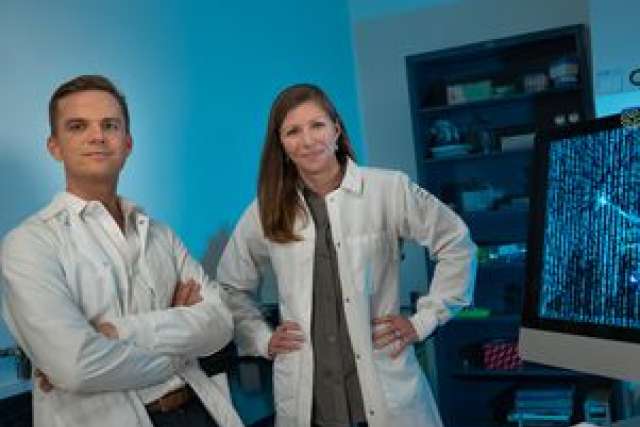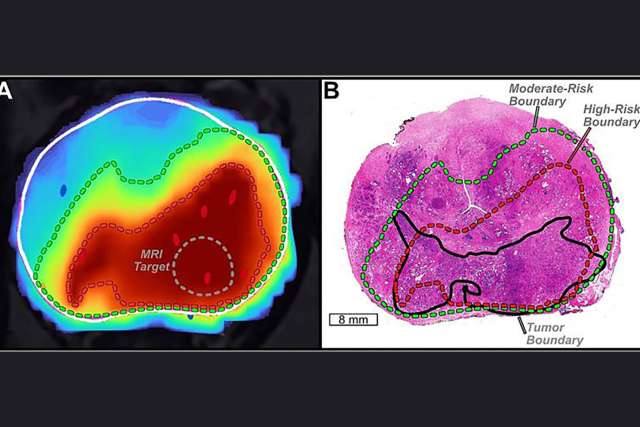FINDINGS
UCLA researchers have found that the extracellular matrix, the dense network of proteins and carbohydrates that surround a cell, can influence how cells move within the body by regulating their sugar consumption. The study shows that acute changes in a single component of the extracellular matrix can trigger a very rapid change in the metabolism and migration of the cell.
BACKGROUND
Given its importance in the growth and migration in cancer cells, scientists have intensely studied how glucose metabolism can be regulated in response to a variety of both internal and external cues. But little research has focused on the relationship between metabolism and changes in specific components of the extracellular matrix — the dense network of proteins and carbohydrates that surround the cell — which occur both during normal development and in disease progression.
METHOD
While analyzing breast tumors from patients and breast cancer cell lines for genes that influence glucose metabolism, the researchers made the surprising discovery that among the genes most tightly associated with a high rate of glucose metabolism was a receptor for a core component of the extracellular matrix, hyaluronan.
Because this receptor tethers the cell to the hyaluronan in the matrix, the finding suggested that changes in the structure or composition of the extracellular matrix might affect metabolism. The researchers confirmed that hypothesis by modulating the levels of hyaluronic acid around the cells and measuring subsequent changes in their rate of glucose metabolism.
IMPACT
The study suggests that scientists might be able to create new treatments for cancer that work by targeting tumors in a way that undercuts the cells' ability to metabolize sugar. Instead of therapies working by directly targeting the cell, it may be possible to alter tumor metabolism by targeting the extracellular matrix.
The finding could lead to a new understanding of many diseases, and might particularly shed new light on how cancer spreads. It suggests that differences in nutrient consumption among the cancer cells within a single tumor mass may align with differences in their tendency to migrate. Those cells with a higher rate of glucose metabolism may be able to fuel the migration to other parts of the body, or metastasis.
AUTHORS
The study's first author is BJ Sullivan, a UCLA graduate student. The senior author is Heather Christofk, an associate professor of biological chemistry and of molecular and medical pharmacology, director of basic and translational research at the UCLA Jonsson Comprehensive Cancer Center and a member of the Eli and Edythe Broad Center of Regenerative Medicine and Stem Cell Research. Other authors, also of UCLA, are Peter Mullen, Ernst Schmid, Aimee Flores, Milica Momcilovic, Mark Sharpley, David Jelinek, Andrew Whiteley, Matthew Maxwell, Blake Wilde, Utpal Banerjee, Hilary Coller, David Shackelford, Daniel Braas, Thomas de Aguiar Vallim and William Lowry. Donald Ayer of the University of Utah’s Huntsman Cancer Institute is also an author.
JOURNAL
The research is published online and will be the cover story in the Sept. 20 issue of the journal Cell.
FUNDING
The research was supported by grants from the by the UCLA Tumor Cell Biology Training Program, the National Institutes of Health, the American Cancer Society, the Jonsson Cancer Center and the UCLA Broad Stem Cell Center’s Ablon Scholars Program.




